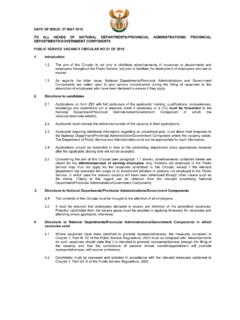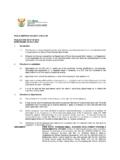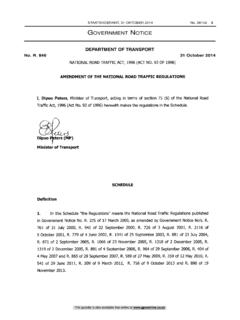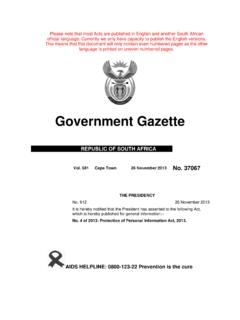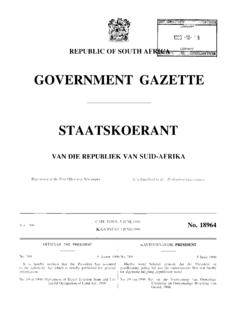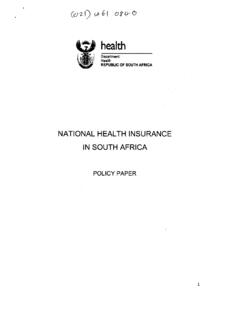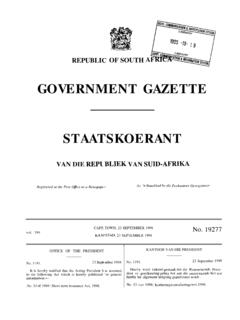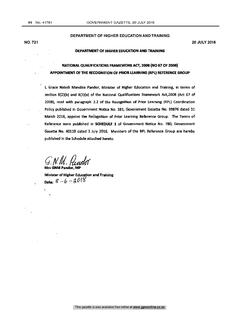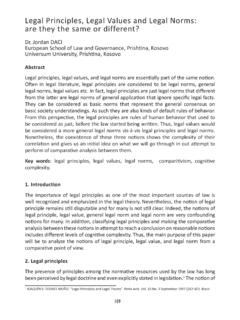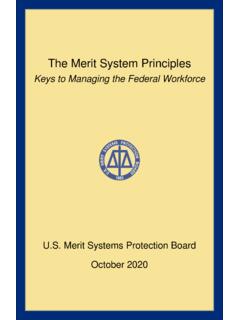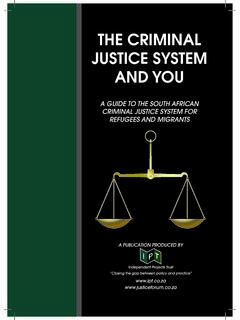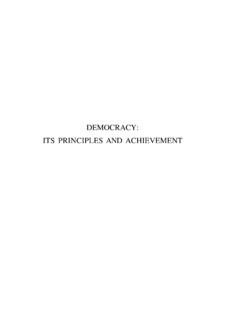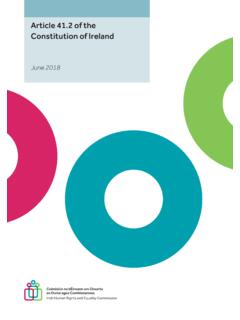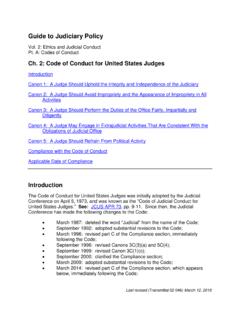Transcription of National Action Plan to combat racism, racial ...
1 National Action plan (NAP). to combat Racism, racial Discrimination, Xenophobia and Related Intolerance RE PUBL IC OF SOUTH AFRICA. 2 National Action plan to combat Racism, racial Discrimination, Xenophobia and Related Intolerance TABLE OF CONTENTS. Foreword 3. Preamble 5. Definitions 7. Acronyms 8 Chapter 1: Introduction and purpose of the NAP 12 Chapter 2: Historical context 15. Chapter 3: Democracy the end of all forms of discrimination? 18 Chapter 4: What tears us apart? Grappling with the fault lines 21. Chapter 5: South Africa today 35. Chapter 6: Addressing racism and discrimination and 37. promoting equality what we have done so far Chapter 7: The NAP 46. Chapter 8: Measures 54.
2 Chapter 9: Governance model 63. Conclusion 67 Photo credit: Rodger Bosch, National Action plan to combat Racism, racial Discrimination, Xenophobia and Related Intolerance 3. FOREWORD BY THE PRESIDENT OF THE REPUBLIC OF SOUTH AFRICA. S. outh Africa's peaceful and negotiated transition from apartheid to democracy a quarter of a century ago was an inspiration to the world. It brought Black and White South Africans together after centuries of conflict to establish a new, united nation based on principles of equality and dignity. In his inauguration speech in May 1994, President Nelson Mandela invoked images of each of us, like the jacaranda trees of Pretoria and the mimosa trees of the bushveld, being intimately attached to the soil of this beautiful country and he spoke of a rainbow nation at peace with itself and the world.
3 As our nation marks 25 years of freedom and democracy, we are called upon, however, to acknowledge that this vision is undermined by recurrent manifestations of racism and racial discrimination. We are not alone in this, because racism and xenophobia, often cloaked in nationalism, is on the rise. However, to the extent that these challenges manifest in our own society, we bear responsibility for eliminating behaviour that violates the letter and spirit of the Preamble to our Constitution which says: We, the people of South Africa, Recognise the injustices of our past;. Honour those who suffered for justice and freedom in our land;. Respect those who have worked to build and develop our country; and Believe that South Africa belongs to all who live in it, united in our diversity.
4 Racism and racial discrimination continue to be felt in our society alongside other forms of prejudice, sexism, xenophobia, homophobia, hate crimes and hate speech. The time has come for us to shed all shackles of prejudice and discrimination so that we can fulfil the promise of building a united, non- racial , non-sexist and prosperous country in which all who live in it are not just entitled to equality, but experience equality in their daily lives. South Africa's commitment to the eradication of discrimination and intolerance in various forms is informed by the Declaration and Programme of Action adopted by the United Nations (UN) World Conference against Racism of 2001, which urged States to: establish and implement without delay National policies and Action plans to combat racism, racial discrimination, xenophobia and related intolerance, including their gender- based manifestations.
5 4 National Action plan to combat Racism, racial Discrimination, Xenophobia and Related Intolerance This plan calls for commitment by all South Africans to values and behaviour that will break with our hurtful and damaging past and that will keep our moral compass trained on our path of renewal and growth.. In answering this call, Cabinet has adopted this National Action plan to combat Racism, racial Discrimination, Xenophobia and Related Intolerance. The plan is based on the collective conviction of South Africans that, given that the ills of unfair discrimination and inequality are human-made; we have the means to completely eradicate these ills from our country. The plan has been developed through a comprehensive consultation process involving government, the Chapter Nine institutions and civil society, and is informed by general principles of universality, interdependence and indivisibility of human rights, participation and inclusion, progressive realisation, accountability, equality and non-discrimination.
6 The plan commits all sectors of our society to the promotion and protection of human rights, and to raising awareness of anti-racism, equality and anti-discrimination issues. It calls for a partnership between government departments and Chapter Nine institutions in implementing anti-racist and anti-discrimination education. Further actions include the collection of data regarding racism and discrimination in order that we may combat these problems and improve such interventions as the prosecution of offenders and psychosocial support for victims. The National Action plan (NAP) also makes provision for the identification of legislation that needs to be amended or adopted with a view to improving the protection of victims, the building of a more equal society, and strengthening of the rule of law and democracy.
7 This plan calls for commitment by all South Africans to values and behaviour that will break with our hurtful and damaging past and that will keep our moral compass trained on our path of renewal and growth. This is an effort that must have its root in every heart and every home, from where our values must radiate into our classrooms, workplaces, supermarket queues, restaurants and stadiums. Let us make our next 25 years of freedom a period where we will indeed be free of the divisions, discrimination and intolerance of our past. National Action plan to combat Racism, racial Discrimination, Xenophobia and Related Intolerance 5. PREAMBLE. The World Conference against Racism, racial Discrimination, Xenophobia and Related Intolerance (WCAR), as presented in the Durban Declaration and Programme of Action (DDPA, 2001) states that: We recognise that racism, racial discrimination, xenophobia and related intolerance occur on the grounds of race, colour, descent or National or ethnic origin and that victims can suffer multiple or aggravated forms of discrimination based on other related grounds such as sex, language, religion, political or other opinion, social origin, property, birth or other status.
8 The Declaration and Programme of Action adopted by the UN World Conference against Racism urges States to establish and implement without delay National policies and Action plans to combat racism, racial discrimination, xenophobia and related intolerance, including their gender based manifestations.. Given South Africa's history of colonialism and apartheid, the call by the Durban Conference is more than relevant. In 1994, the country emerged from three and a half centuries of racial oppression, perpetrated by successive White, colonial and apartheid governments. During this long period, the Black majority were treated like hewers of wood and drawers of water. They were marginalised politically, dispossessed economically and suppressed culturally.
9 The scars of colonialism and apartheid are indeed still visible on the collective face of South African society today. Poverty and underdevelopment are racially based affecting mostly Black persons while wealth ownership and a better life largely remain the preserve of White persons. Colonialism and apartheid further worsened already existing traditional practices that undermined the dignity and wellbeing of women in society. The patriarchal practices that characterised traditional African communities were used politically to serve the interests of successive minority governments. It is an incontrovertible truth that, compared to their male counterparts, women generally occupied a weaker position in society.
10 The many years of a racist and isolationist policy of apartheid have planted seeds of xenophobia, particularly towards Africans, undoing centuries of brotherhood and sisterhood among Africans in South Africa and those from other parts of the continent. This is how Africans have come to be the worst victims of xenophobia in contemporary South Africa. This NAP is a response to the call made by the Durban Conference and is meant principally to serve as the guiding document behind National efforts to eradicate racism, racial discrimination, xenophobia and related intolerance. The NAP does not belong to government only it belongs to the country. As the UN Guidelines1. state, a National Action plan against racial discrimination is a mechanism for the effective pursuit of National goals.
